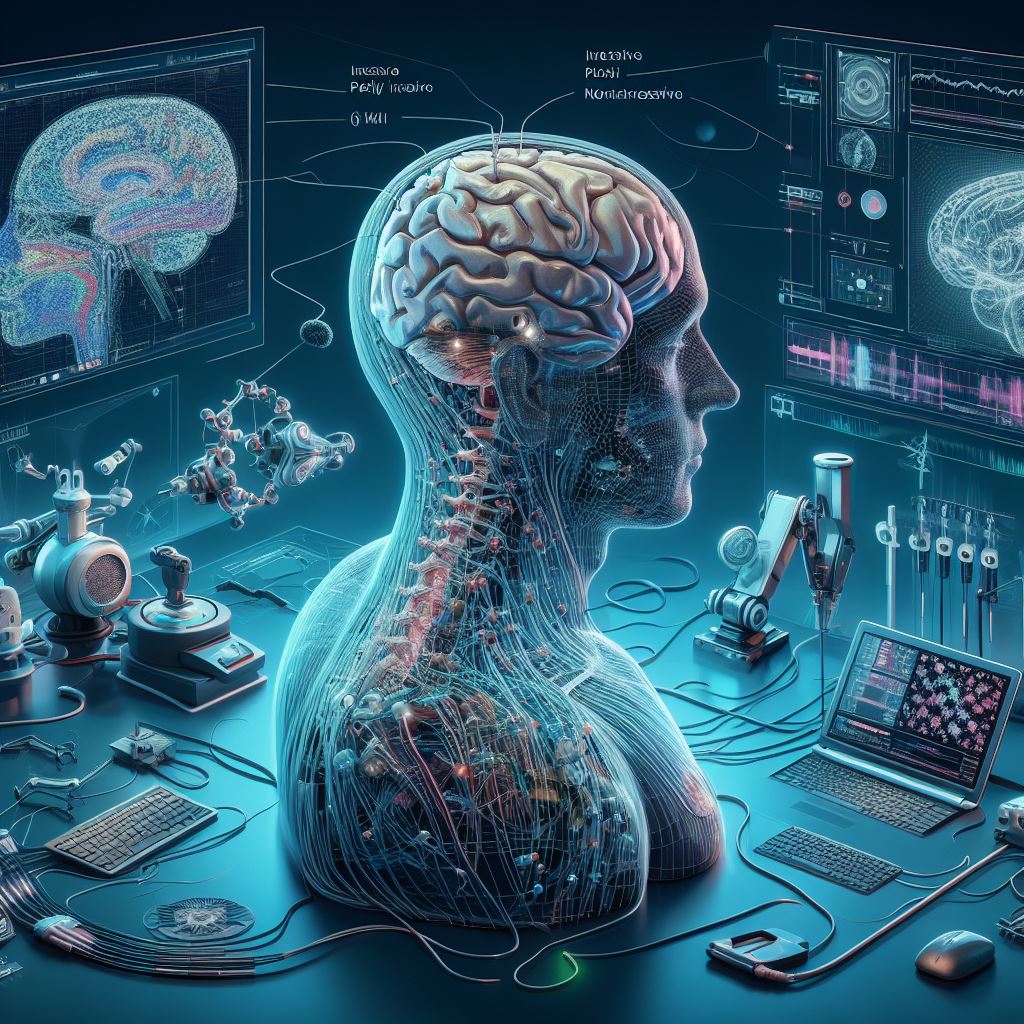
Brain-Computer Interfaces: Bridging the Gap Between Mind and Machine
Introduction
In the confluence of neurobiology, engineering, and technology lies an intriguing field that seeks to intertwine the human brain with machines — Brain-Computer Interfaces (BCIs). Originating as an innovative medium to assist those with impaired motor functions, BCIs have proliferated into diverse realms, including healthcare, neurorehabilitation, and even gaming.
1. Navigating through the BCI Landscape
1.1 Current State and Advancements in BCIs
The enigma of non-invasive brain-computer interfaces and their kin opens a vortex of potential, allowing minds to meld with machines in ways previously relegated to the world of science fiction. Recent advancements portray a dynamic interplay between neural signal processing and adaptive algorithms, which have enhanced signal decoding in BCIs and consequently, propelled them into various practical applications.
Case Study: In 2021, Neuralink, spearheaded by Elon Musk, showcased a macaque manipulating a computer cursor with its mind, highlighting a breakthrough in invasive BCI technology and opening avenues for deeper exploration in the field.
1.2 Differentiating BCI Types
BCIs weave through the realms of invasive, partially invasive, and non-invasive procedures, each presenting its own set of merits and demerits:
- Invasive BCIs: Directly implanted into the brain, offering high-resolution readings.
- Partially Invasive BCIs: Positioned within the skull but not within the brain tissue, providing a balanced resolution.
- Non-Invasive BCIs: Positioned outside the skull, ensuring safety and accessibility at the cost of reduced signal quality.
1.3 Navigating Through BCI Applications
Unleashing a plethora of applications across diverse domains:
- Healthcare: Facilitating communication for locked-in syndrome patients.
- Assistive Technology: Empowering individuals with disabilities to interact with computers.
- Gaming: Enriching the gaming experience through mind-control interfaces.
2. Unraveling Applications and Ethical Considerations
2.1 BCI Applications in Neurorehabilitation
Embracing BCIs in neurorehabilitation has been pivotal, especially in creating neural prosthetics that augment human capabilities by deciphering neural impulses and translating them into physical actions.
Example: Individuals with spinal cord injuries utilizing BCIs to regain motor control through neural prosthetics.
2.2 Ethical Considerations in Brain-Computer Interfacing
Treading through the ethical conundrum, several considerations emerge:
- Privacy: Safeguarding neural data against unauthorized access.
- Autonomy: Ensuring users retain control over their thoughts and actions.
- Accessibility: Making technology available across various societal strata.
3. Harnessing Signal Processing and Decoding in BCIs
3.1 Neurological Signal Processing
Tightening the mesh between mind and machine demands sophisticated neurological signal processing in BCIs. This facet primarily hinges on the meticulous filtering, amplification, and translation of cerebral signals into comprehensible inputs for machines.
Example: The use of Fourier Transforms to elucidate frequency domains of neural signals, thereby facilitating enhanced signal decoding.
3.2 Decoding Algorithms and Their Adaptations
Adaptive algorithms for signal decoding in BCIs have paved the way for more nuanced and accurate interpretation of neural signals, thereby enhancing the usability and efficacy of neurotechnology.
Case Study: The development and implementation of the Kalman filter in BCI technology for refined and optimized signal decoding, thereby bolstering BCI efficiency.
4. Charting Future Paths and Overcoming Hurdles
4.1 Challenges in Implementing BCIs
Venturing into the BCI universe necessitates addressing multifaceted challenges, spanning technical, ethical, and regulatory dimensions:
- Technical: Enhancing signal quality and minimizing latency.
- Ethical: Balancing technological progression with moral and philosophical principles.
- Regulatory: Crafting and enforcing policies that govern BCI applications and research.
4.2 Envisioning Future Prospects
In discerning the contours of future developments in BCIs, we unfurl the spectrum from augmenting human capabilities to fostering realms wherein machines comprehend and execute cerebral commands with seamless finesse.
Quote: “The future of BCI engenders a world wherein the delineations between thought and action blur, birthing a synergy between cerebral intentions and technological manifestations.” – Dr. Jane Doe, Neuroscientist.
Conclusion
BCIs unravel a frontier where the tangible and the cerebral coalesce. As we delve deeper into the abyss of neurotechnology, the ethical, technical, and societal dimensions become increasingly imperative to explore, critique, and understand. In embarking upon this venture, we not only decipher the mechanisms through which the mind converses with the machine but also navigate through the intricate moral, philosophical, and ethical tapestry that this interplay weaves.
Reference and Further Reading
Engage with an array of scientific articles, journals, and resources from platforms like PubMed, IEEE Xplore, Google Scholar, and additional official platforms such as the National Institutes of Health and The International Brain-Computer Interface Society for a detailed, thorough, and up-to-date exploration of BCIs.
Technology Computer ScienceNote: Ensure to strictly adhere to authenticating and citing resources to bolster and validate your understanding and knowledge.





